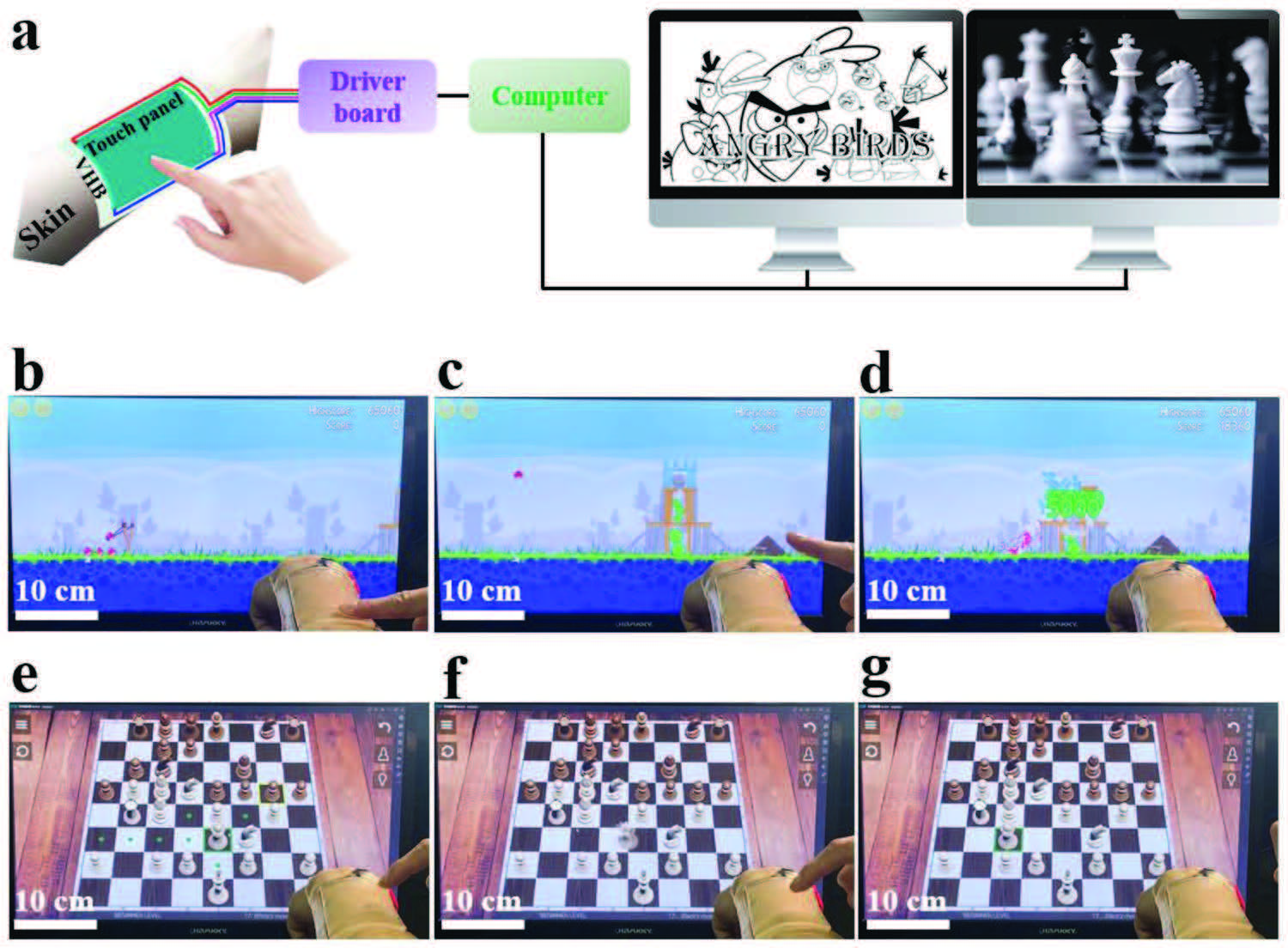| Aug 11, 2022 |
A novel hydrogel material for next-generation integrated touch panels
(Nanowerk News) Many of today's touch panels based on indium tin oxide and face various limitations due to its brittle and stiff nature. However, given the rapid progress of artificial intelligence and the internet of things, researchers have devoted considerable efforts to explore novel materials for next-generation integrated touch panels with multifunctionalities such as transparency, stretchability, flexibility, and self-healing capability.
|
|
For instance, there has been an increasing number of reports on next-generation hydrogel-based touch panels. The latest development, reported in Advanced Functional Materials ("Anti-Freezing Self-Adhesive Self-Healing Degradable Touch Panel with Ultra-Stretchable Performance Based on Transparent Triboelectric Nanogenerators") has been an anti-freezing degradable triboelectric nanogenerator (AD-TENG) with high electrical output property using a novel biocompatible zwitterionic network hydrogel as a transparent self-adhesive self-healing ionic conductor with ultra-stretchable performance.
|
|
Here, researchers from Harbin Institute of Technology designed and fabricated a transparent AD-TENG by sandwiching the zwitterionic network hydrogel with two PDMS layers using the hydrogel as a current collector. When a hand gets in contact with the AD-TENG, tribo-electrification occurs at the interface, and triboelectric charges with opposite polarities are generated at the surface of the PDMS and skin, respectively. The hydrogel can adhere to different targeted substrates and recover instantly its initial conductivity upon damage due to the existence of polar zwitterion groups.
|
 |
| Structural schematic of the AD-TENG. (Adapted with permission from Wiley-VCH Verlag)
|
|
The result is a triboelectric nanogenerator technology for realizing the self-powered ability of flexible electronics. In their report, the team demonstrated that their self-powered system possesses strong energy harvesting ability with remarkable stability, which could light up LED array in series and directly drive a portable electronic, even at a large deformation and a low-temperature environment.
|
|
Furthermore, they also demonstrated the design of an environmentally-friendly wearable epidermal touch panel with flexible and multifunctional properties on curved human skin. They successfully utilized this touch panel, both in the initial and self-healing state, for various operations including writing, and playing computer games, even in a low-temperature environment.
|
 |
| Structure and operation of an epidermal touch panel. a) Schematic illustration of an epidermal integrated touch panel. b–d) Operational photographs of playing Angry Birds by an epidermal touch panel. b) an Angry Bird was captured by the slingshot when a finger touched the panel, c) the slingshot was released when the finger left the panel, and the bird took off, d) the target was broken by the bird. e–g) Photographs record of playing Chess using the panel. e) a chess piece was selected when the finger clicked the piece position on the touch panel, f) another position of the chessboard was chosen for the chess piece, and the chess piece shifted, g) the chess piece was shift to the target position. (Reprinted with permission from Wiley-VCH Verlag)
|
|
The researchers believe that this work not only provides a practical way to construct human-machine communication interfaces with self-powered nature, but also will shed new light on designing promising materials for flexible electronics, such as actuators, soft robotics, and electronic skins.
|


 By
Michael
Berger
– Michael is author of three books by the Royal Society of Chemistry:
Nano-Society: Pushing the Boundaries of Technology,
Nanotechnology: The Future is Tiny, and
Nanoengineering: The Skills and Tools Making Technology Invisible
Copyright ©
Nanowerk LLC
By
Michael
Berger
– Michael is author of three books by the Royal Society of Chemistry:
Nano-Society: Pushing the Boundaries of Technology,
Nanotechnology: The Future is Tiny, and
Nanoengineering: The Skills and Tools Making Technology Invisible
Copyright ©
Nanowerk LLC
